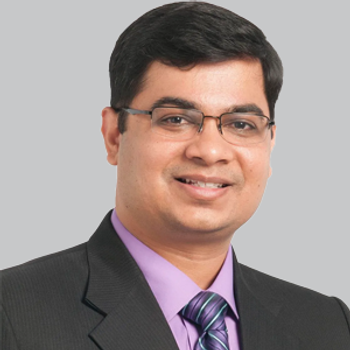
Building the Next Era of ALS Clinical Research and Trials

Ryan Donaghy, MD, an assistant professor of neurology at Northwestern Medicine, discussed the evolving landscape of ALS clinical trials, including advances in biomarkers, genetics, and modern trial design.
Clinical trial design in
In this Q&A conversation, Ryan Donaghy, MD, a neuromuscular specialist and assistant professor of neurology at
NeurologyLive: When you look at the landscape of ALS trials today compared to even a decade ago, what stands out as the biggest change in how these trials are conducted?
Ryan Donaghy, MD: One of the most important changes has been the shift from single-center trials operating in isolation to large, multicenter national and international networks. Historically, ALS trials were limited to a few specialized centers, which restricted patient access and slowed data collection. Now we are seeing collaborative platforms that reach patients who previously had difficulty getting to trial sites. This broader enrollment helps accelerate data analysis, safety evaluation, and overall trial timelines. In my view, that transition to multicenter trial ecosystems has been the biggest revolution in ALS clinical research.
Many groups are focused on integrating biomarkers into ALS trials. How do you see this changing trial design and clinical practice?
This is a central question in the field. There is a strong push to supplement traditional symptom-based scales with more objective biomarkers. Neurofilament is at the top of that list. The early findings in the initial tofersen trial were really important because neurofilament was one of the first biological changes detected, even before clinical differences became obvious. That helped support tofersen’s approval and really highlighted how biomarkers can accelerate a therapy’s development.
In our own practice, we are using neurofilament more routinely to help characterize disease activity. What is equally exciting is the growth of longitudinal biofluid collection across large research networks. Groups like Target ALS and several other natural history cohorts are collecting serial spinal fluid and blood samples linked to detailed clinical data.
Even ongoing interventional studies, including the digoxin in ALS trial, incorporate serial CSF biomarker analysis. That includes genetic subgroups like the C9ORF72 population.
These longitudinal biobanking efforts are incredibly powerful. They give basic scientists and translational researchers access to deeply characterized patient samples. That combination of clinical data and biological data has the potential to speed up our understanding of ALS mechanisms and shorten the time needed to observe treatment effects. Instead of requiring classic one to two year follow up, we may reach a point where meaningful biomarker changes can be detected in a matter of months.
What lessons can clinicians and researchers take from the HEALEY ALS platform trial, which is often cited as a major advance in trial efficiency?
The HEALEY platform has been a major advance. It allows multiple investigational therapies to be tested at the same time under a shared infrastructure. By centralizing the IRB process and centralizing data analysis, the platform dramatically shortens trial timelines. Historically, each therapy needed its own two year study just to get off the ground. The platform model replaces that with a more rapid, flexible testing system.
While none of the therapies tested so far have shown a strong positive signal, there are subtle signals in the data, and analyses are still ongoing. The expanded access programs associated with some of these arms have also been valuable. But beyond specific results, the process itself has shown us that ALS trials do not need to be slow or siloed. The platform approach has become a foundation on which future trial designs can build.
Looking ahead, I think one of the biggest determinants of progress will be improving our understanding of the genetic basis of ALS. About ten percent of patients carry a pathogenic mutation, either familial or sporadic. For the remaining ninety percent, I think it is very likely that many individuals have genetic contributors we have not yet identified. Eventually, I expect that every ALS patient will have some form of genetic characterization that informs disease mechanism or predicts response to certain therapies.
When you combine that level of genetic insight with biomarkers from longitudinal biofluid programs, you have the ability to construct much more precise and efficient trials. That is where the field is moving.
As more gene targeted therapies emerge for ALS, what practical considerations should clinicians and trial centers be preparing for?
One important consideration is that not every clinic is set up to manage genetic diagnoses or provide genetic counseling. Clinicians need to feel comfortable interpreting genetic results and guiding patients through the implications for their families. That includes discussions about family planning, risk to relatives, and how genetic information may influence treatment decisions. At Northwestern, we work closely with a neuromuscular geneticist, and I think many clinics will need similar partnerships.
Another major practical factor is delivery method. Many genetic therapies, including tofersen, currently require intrathecal administration. That means clinics need strong relationships with interventional radiology, anesthesia, or procedural teams who can perform lumbar punctures consistently and safely. Smaller clinics may need to build this infrastructure if they want to offer these therapies. Over time, we hope that systemic delivery methods become available, but for now, intrathecal administration remains the most reliable way to reach motor neurons.
Can ALS research draw lessons from progress seen in other neuromuscular disorders such as SMA or Duchenne muscular dystrophy?
Absolutely. The pediatric neuromuscular community has seen remarkable breakthroughs in genetic therapies, and we are already learning from their experiences. In our ALS clinic, we now care for young adults with Duchenne and SMA who have benefited from early access to transformative therapies. Those successes show what is possible when you combine clear disease mechanisms with targeted genetic medicine.
We also learn a lot from how other neuromuscular disorders use biomarkers. For example, in CIDP, we have standardized response scales, validated clinical measures like handheld dynamometry, and a deep understanding of natural disease course. That framework supported the approval of several therapies and continues to guide ongoing trials. Those same principles are being translated into ALS research.
Across the board, the more we understand about biomarkers, genetics, and longitudinal disease behavior, the better we can design ALS trials that detect true signals and move promising therapies forward more efficiently.
Newsletter
Keep your finger on the pulse of neurology—subscribe to NeurologyLive for expert interviews, new data, and breakthrough treatment updates.



































